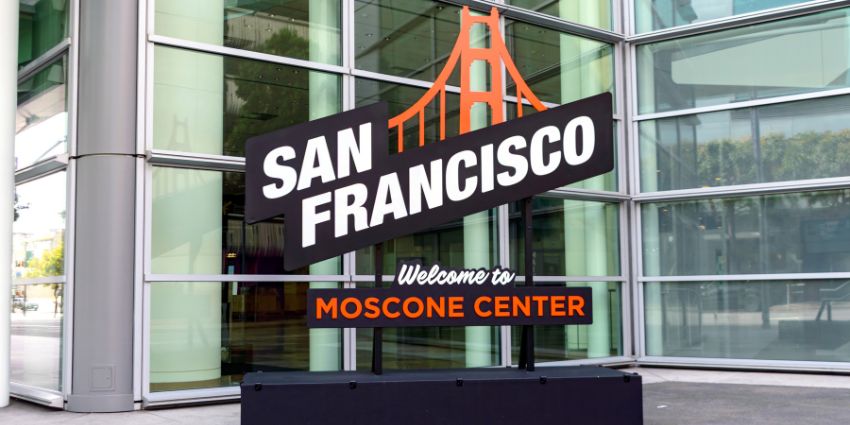A new study has found that two-thirds of organisations that have rolled out AI are failing to effectively scale the technology across their businesses.
A new study from Asana‘s Work Innovation Lab, Asana’s Crossing the 5 AI Chasms Report, reveals that 67 percent of companies are still struggling to scale AI across their organisations two years into the AI boom.
While businesses are adopting AI, its usage remains primarily confined to a “leadership bubble”, with deployments focused on individual tasks rather than broader team collaboration. This siloed approach is limiting AI’s widespread adoption and impact across organisations.
Dr Mark Hoffman, Collaborative Intelligence Lead at Asana’s Work Innovation Lab, commented:
If employees feel like AI is something that is happening to them, not for them, adoption will stall, and it won’t scale. That’s why companies that do track employee satisfaction and feelings around AI are 32 percent more likely to see AI adopted across job levels, not just at the leadership level.”
The study surveyed 3,182 workers at organisations across the US and the UK, as well as 112,000 workers at over 350 organisations leveraging Asana’s AI.
Why is There Such a Significant Disconnect Between Leaders and Workers?
Asana’s report highlights a significant gap in AI adoption between leadership and employees. Senior leaders are 66 percent more likely to be early AI adopters than their teams, while managers are 38 percent more likely to use AI on a weekly basis compared to individual contributors.
Asana suggests the AI “leadership bubble” stems from several key factors. Employee scepticism remains high, with individual contributors 39 percent more sceptical of AI than company leaders. Job security concerns also hinder adoption, as employees are 32 percent more worried about AI’s impact on their jobs than executives.
AI’s delegation model further reinforces this divide. Workers who frequently delegate tasks to others are nearly twice as likely (1.9x) to delegate to AI, but for junior employees, delegation—whether to people or AI—feels less intuitive.
These gaps highlight a lack of dialogue between executives and employees. While 59 percent of companies track AI’s financial ROI, only 23 percent measure employee satisfaction. Addressing scepticism and job concerns through open discussions can help drive broader AI adoption across organisations.
Addressing AI’s Role as a Team Player vs Solo Operator
Asana outlines another major obstacle to scaling AI: how AI workflows are built within organisations. Most AI adoption begins as a solo experiment, which, while valuable, doesn’t easily scale. Asana’s study found that 49 percent of AI workflows are designed for individual use, yet these workflows lead to just 6 percent downstream adoption among colleagues. Asana suggests this is because they aren’t built with teams in mind.
Collaboration challenges further limit AI’s reach. Only one-fifth of employees feel their teams work effectively across the organisation, creating barriers to AI adoption. However, employees who collaborate with AI users are 30 percent more likely to adopt AI themselves.
This effect is even more substantial in cross-functional workflows—when AI is embedded across teams, adoption jumps by almost half (46 percent). Asana affirms that this highlights the importance of designing AI processes that prioritise teamwork rather than isolated use cases.
“Before companies can truly scale AI within their organisation, they must first examine how teamwork happens,” Hoffman added. “If teams are operating in silos, workers are more likely to continue using AI for solo use rather than unlock AI use within teams – and crucially, across different team functions, where we are seeing the strongest impact from AI.”
Will AI Evolve Into an ‘Orchestrator of Work’ to Overcome Adoption Challenges?
Asana’s vision for overcoming these adoption challenges is cross-functional collaboration and AI’s elevation into a proactive enabler of productive work rather than a reactive assistant.
UC Today spoke to Rodrigo Davies, AI Product Leader at Asana, earlier this month about how AI can become an “orchestrator of real work.”
“AI has traditionally been very much about what prompt you could write or press a button and wait for AI to do something,” Davies said. “I think what we hear over and over from customers is that they want AI to actually show up and help without being asked necessarily and to obviously do so very thoughtfully.”
“So that’s something we’ve been experimenting with,” Davies added. “When there’s been a certain amount of activity on your project or portfolio automatically, writing a drafting a status update for you and saying, ‘Hey, there’s been some activity, consider writing an update, here’s a start for you.’ Those kinds of proactive features have been very popular with customers so far.”







